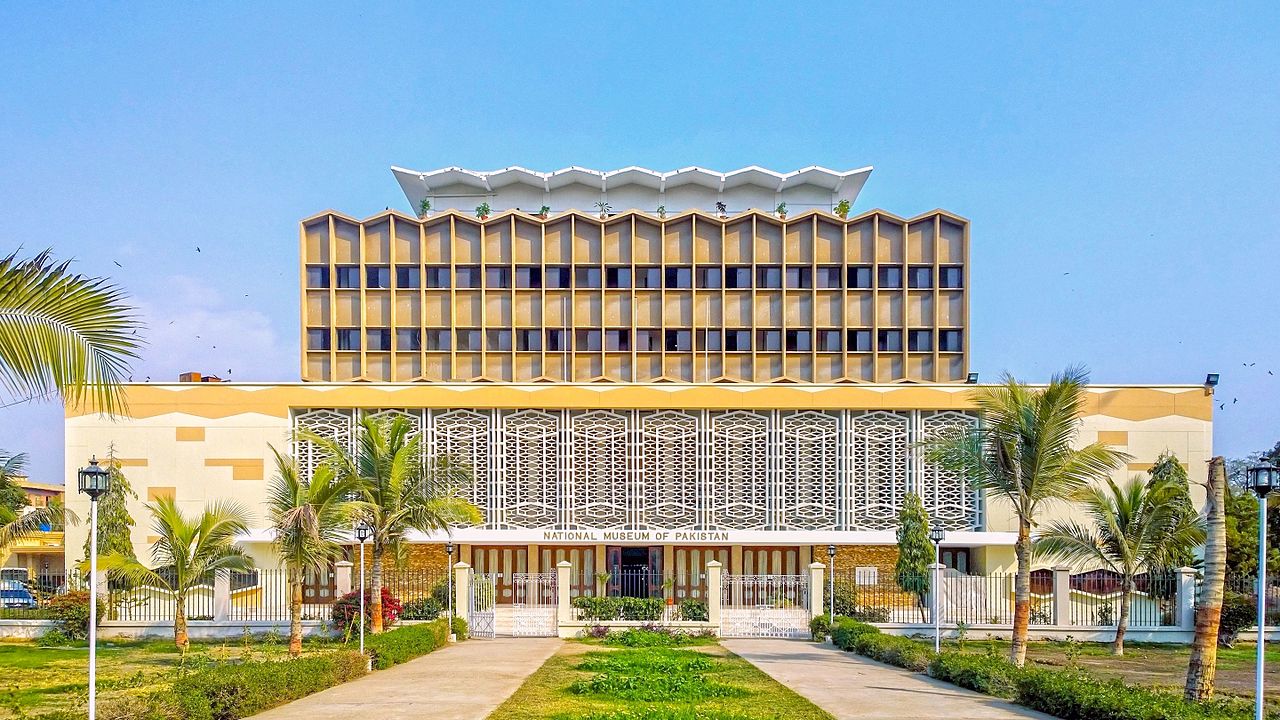
National Museum of Pakistan

National Museum of Pakistan
Karachi, Pakistan
Established in 1949
Subject: Archaeology, history, manuscripts, historical records, numismatics and ethnology
At the entrance of the gallery, large relief map of vast territory of South-Western Asia shows routes that linked various regions. Inside the gallery is chronologically placed material from Stone Age, village cultures of Baluchistan and the great Indus Valley Civilization, which flourished more than a millennium from 2500 BC. Harappa and Mohenjodaro are now known as twin capital of this vast urban civilization.
Gandhara Art relating to the study of Buddha. The statues of Buddha, found in Taxila and Non-Buddhist deities – Indra, Brahama and the thunderbolt carrier Vajrapani are on display. Also on display are gold ornaments and jewellery of the Gandhara people.
Arms, armour, ceramics, brass and metal wares, scientific instruments and specimens of textiles, woven in contrasting colors of brown, blue or black with buff white are on display.
Bhambore, about 40 miles from Karachi, has been excavated the earliest remain of Islamic culture of Pakistan. A number of copper coins of Umayyad period along with specimens of pottery made in Syria with unglazed, white, thin-textured and molded in relief with “Kufic” inscription and floral-geometric patterns are displayed.
Glass articles, Ceramic ware objects with artistic carving and other phases in the development of glassware are represented in the gallery.
Metal ware with floral decorations from subcontinent and Central Asia is also on display. On the second floor of Museum, there is fantastic display of Muslim calligraphy. Angular “Kufic” and cursive “Naskh” are the early forms used during the first century in Islamic architecture, in copies of Koran and in textile and pottery, written in vertical strokes.
Miniature painting of portraits of Mongol emperors, queens and princes, who patronized the art, also adorn the gallery.
Ethnological gallery, on its western side, shows representative collection of the living culture of various tribal, semi-tribal and part of the rural population, living in different regions of Pakistan.